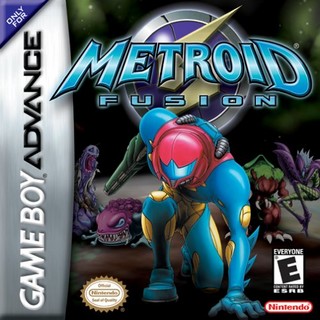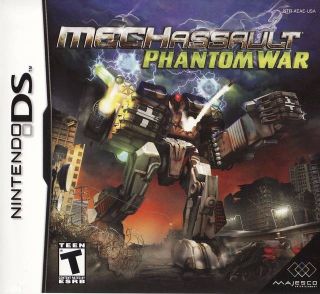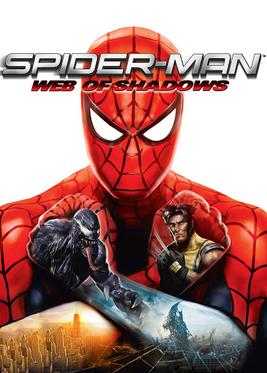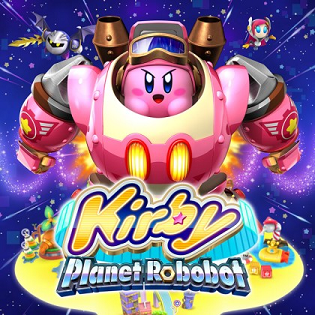Metroid is an action-adventure game franchise created by Nintendo. The player controls the bounty hunter Samus Aran, who protects the galaxy from Space Pirates and other malevolent forces and their attempts to harness the power of the parasitic Metroid creatures.

Metroid Prime is a 2002 action-adventure game developed by Retro Studios and published by Nintendo for the GameCube. Metroid Prime is the fifth main Metroid game and the first to use 3D computer graphics and a first-person perspective. It was released in North America in November 2002, and in Japan and Europe the following year. Along with the Game Boy Advance game Metroid Fusion, Prime marked the return of the Metroid series after an eight-year hiatus following Super Metroid (1994).

Super Metroid is a 1994 action-adventure game developed by Nintendo and Intelligent Systems and published by Nintendo for the Super Nintendo Entertainment System. It is the third installment in the Metroid series, following the events of the Game Boy game Metroid II: Return of Samus (1991). Players control bounty hunter Samus Aran, who travels to planet Zebes to retrieve an infant Metroid creature stolen by the Space Pirate leader Ridley.

Metroid Fusion is a 2002 action-adventure game developed and published by Nintendo for the Game Boy Advance. It was developed by Nintendo Research & Development 1, which had developed the previous Metroid game, Super Metroid (1994). Fusion is part of the Metroid series, and takes place between the events of Metroid: Other M and Metroid Dread. Players control the bounty hunter Samus Aran, who investigates a space station infected with shapeshifting parasites known as X.

Metroid: Zero Mission is a 2004 action-adventure game developed and published by Nintendo for the Game Boy Advance. It is a remake of the original Metroid (1986), and retells the story with updated visuals and gameplay.

Metroid Dread is a 2021 action-adventure game developed by MercurySteam and Nintendo EPD and published by Nintendo for the Nintendo Switch. It was released on October 8, 2021. Set after Metroid Fusion (2002), players control the bounty hunter Samus Aran as she investigates the source of a mysterious transmission on the planet ZDR. It retains the side-scrolling gameplay of previous 2D Metroid games and incorporates stealth elements.

MechAssault: Phantom War is an action video game that is part of the MechWarrior series and part of the BattleTech universe created by FASA. Players assume the role of a BattleMech pilot in a 3D environment with a third person view of the combat via the top screen of the DS, while the touch screen displays the inside of the cockpit and acts as the game's controls.

Nicktoons: Attack of the Toybots is an action-adventure video game published by THQ for the Wii, Nintendo DS, Game Boy Advance, and PlayStation 2. The game was first released in North America on October 23, 2007. then in Europe on November 9, 2007. The game was developed by Blue Tongue Entertainment for the Wii and PlayStation 2 versions, Natsume Co., Ltd. for the Nintendo DS version and Firemint for the Game Boy Advance version.

Spider-Man: Web of Shadows is a 2008 action-adventure video game based on the Marvel Comics character Spider-Man. The game was released in October 2008 across multiple platforms, and encompasses three drastically different versions: one released for Microsoft Windows, the PlayStation 3, Wii, and Xbox 360, which features an open world and non-linear gameplay; one for the PlayStation 2 and PlayStation Portable, which is a 2.5D side-scrolling beat 'em up; and one for the Nintendo DS, a Metroidvania-style beat 'em up. All three versions have several common elements, such as moral choices that alter the narrative, the ability to summon allies during fights, and a similar plot, despite different characters being featured. Web of Shadows' storyline is significantly darker than most previous Spider-Man games, as it revolves around a symbiote invasion threatening Manhattan, which Spider-Man must stop with the help of several unlikely allies.

Axiom Verge is a metroidvania video game by American indie developer Thomas Happ. The game was originally released in March 2015 in North America and April 2015 in Europe and Australia for PlayStation 4. It was released in May 2015 for Linux, OS X, and Windows. A PlayStation Vita version was released in April 2016. The Wii U and Xbox One versions were released in North America and Europe in September 2016. A Nintendo Switch version was released in October 2017.

Xeodrifter is a Metroidvania video game developed by Renegade Kid. The game was first released for Nintendo 3DS and Microsoft Windows in 2014. A Wii U port of the game was released 2015, and after Gambitious Digital Entertainment acquired the rights to the Microsoft Windows version of the game, it was also released on PlayStation 4 and PlayStation Vita in 2015. A Nintendo Switch version was released in February 2018.

Metroid Prime: Federation Force is a 2016 cooperative first-person shooter video game developed by Next Level Games and published by Nintendo for the Nintendo 3DS. Taking place after the events of Metroid Prime 3: Corruption (2007), players assume the role of Galactic Federation Marines attempting to thwart the continuing advances of the Space Pirates after Samus Aran eradicated the deadly Phazon mutagen. The gameplay places a greater emphasis on the shooting mechanics and multiplayer, similar to its handheld predecessor Metroid Prime Hunters, albeit with cooperation instead of competition. It also includes a competitive soccer-based game mode known as Metroid Prime: Blast Ball.

Kirby: Planet Robobot is a 2016 action-platform game developed by HAL Laboratory and published by Nintendo for the Nintendo 3DS. It is the eleventh mainline installment in the Kirby series and the spiritual sequel to Triple Deluxe. The story follows Kirby as he defends Planet Popstar from an alien corporation known as the Haltmann Works Company that wishes to mechanize the planet so that they can plunder its natural resources. New to the series in this game is Kirby's ability to utilize a mecha suit known as the Robobot Armor to solve puzzles and fight enemies.

The Mummy Demastered is a Metroidvania video game developed by WayForward Technologies and based on the 2017 film The Mummy. It takes place concurrently with the events of the film, with players playing as an unnamed Prodigium soldier under the command of Dr. Henry Jekyll who must fight the evil forces of Princess Ahmanet. The game was released for Windows, PlayStation 4, and Xbox One in October 2017. The Nintendo Switch version was released in Japan on July 30, 2020, while a version for Amazon Luna was released on October 20 of the same year.

Daemon X Machina is a 2019 action game by Marvelous. It was released for Nintendo Switch and Windows, receiving mixed reviews. A sequel, Daemon X Machina: Titanic Scion is in development.

Chasm is a Metroidvania video game developed and published by Bit Kid, Inc. for Microsoft Windows, macOS, Linux, PlayStation 4 and PlayStation Vita in July 2018, the Nintendo Switch in October 2018, and the Xbox One in November 2018.

Assault Suit Leynos 2 is a 1997 Japanese run and gun video game developed by NCS for the Sega Saturn. It is a direct sequel to Assault Suit Leynos, for the Mega Drive and is the third title in the Assault Suits series. It is a side-scrolling mecha shooting game set in the future.

Panzer Paladin is a side-scrolling action platformer developed and published by Tribute Games and released for Microsoft Windows through Steam and Nintendo Switch in July 2020. It was later released for PlayStation 4 and Xbox One in June 2024. The player assumes the role of a rescue service android named Flame who pilots a sentient power armor mecha named Grit as the two work together to stop extraterrestrial demonic invaders from conquering the Earth. The game draws inspiration from several NES-era titles including Zelda II: The Adventure of Link,Mega Man and Blaster Master.

Touhou Luna Nights is a Metroidvania action-adventure Touhou Project fangame developed by Team Ladybug and published by Active Gaming Media brand Playism for Windows. First available through Steam Early Access in 2018, the game was fully released in February 2019, and later ported to the Xbox One and Nintendo Switch in 2020. The PlayStation 4 and PlayStation 5 ports were released in January 2024.

Astalon: Tears of the Earth is a 2021 video game by LABS Works, published by Japanese publisher Dangen Entertainment. The game's plot revolves around a fighter named Arias, an archer named Kyuli, and a wizard named Algus. The three are on a quest to save their home village from despair as most of the land has turned to desert from the atrocities of an ancient war.

















